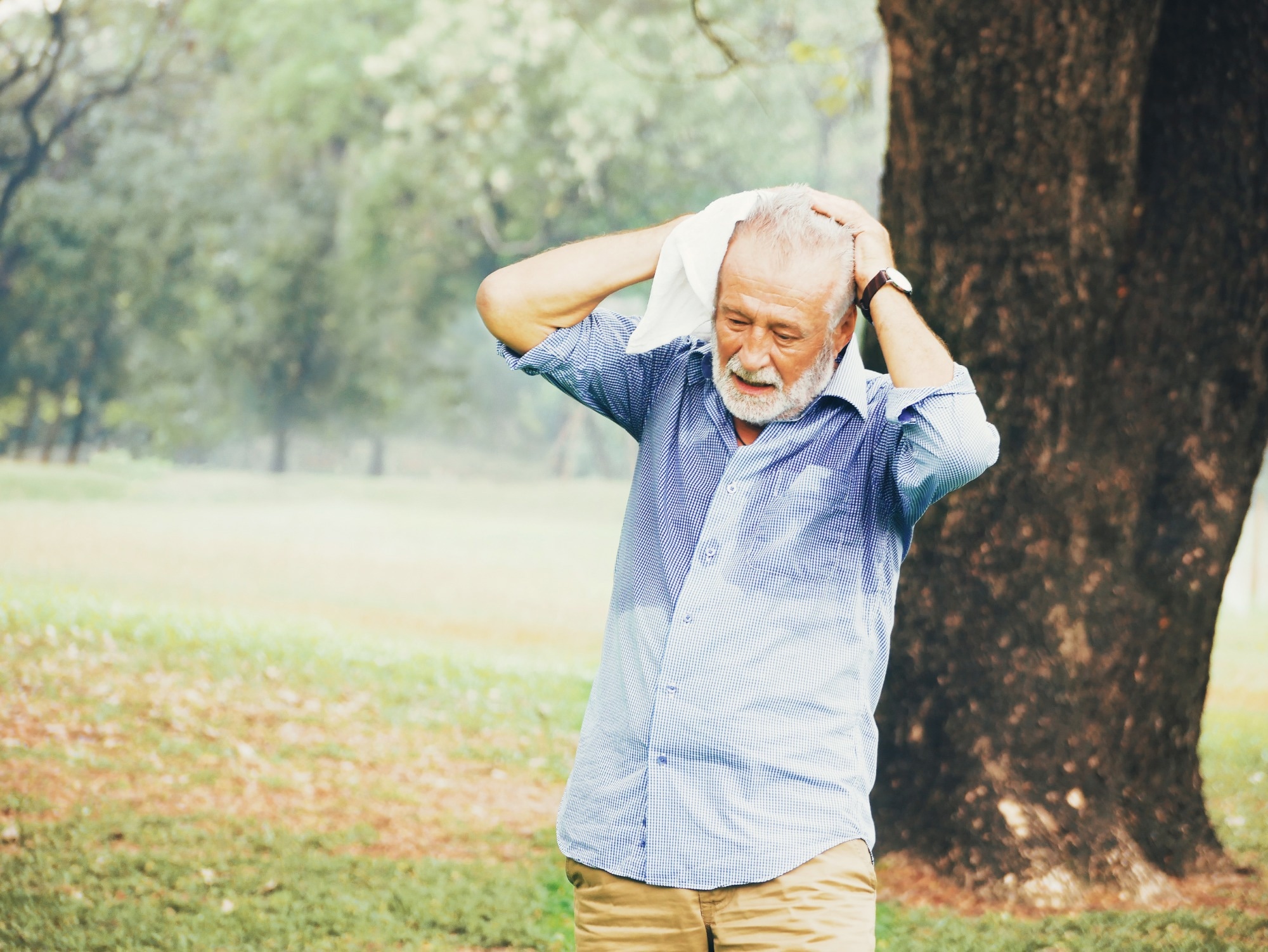As climate change fuels longer, hotter summers, new research shows that older adults’ hearts can’t keep up, exposing a silent, growing crisis at the intersection of aging and rising temperatures.
 Study: Cardiovascular challenges of aging in a hotter environment: a narrative review. Image credit: PorporLing/Shutterstock.com
Study: Cardiovascular challenges of aging in a hotter environment: a narrative review. Image credit: PorporLing/Shutterstock.com
In a recent review in the Journal of Applied Physiology, researchers discussed the implications of extreme heat for the cardiovascular health of aging populations worldwide.
The authors examined how aging intensifies heat stress effects on the cardiovascular system, focusing on recent (past decade) epidemiological findings, physiological mechanisms, and environmental triggers for cardiovascular risk in older adults.
Their conclusions highlighted concerns that aging individuals exposed to heat wave conditions could experience heightened core temperatures, increasing their risk of cardiovascular illnesses and complications, and thus mortality.
Rising heat and aging populations
Extreme environmental heat is the leading weather-related cause of death worldwide, and its impact is expected to increase as global temperatures continue to rise. Heatwaves are becoming longer and more severe, exposing billions of people to prolonged high temperatures.
This exposure will dramatically expand with even a 2°C global temperature rise. Simultaneously, the proportion of adults aged 65 and above is increasing rapidly, projected to reach 1.6 billion (16.7% of the global population) by 2050.
As a result, this overlap of rising heat and a rapidly aging population creates a major global health challenge, with older adults being most vulnerable to heat-related illness and death, particularly from cardiovascular causes.
Cardiovascular vulnerability due to extreme heat
Recent epidemiological studies consistently show that adults over 65 face the highest rates of heat-related hospitalizations and deaths, most of which are due to cardiovascular disease (CVD).
In New York City alone, around 580 summer deaths annually are heat-related, and 62% of these involve pre-existing CVD. As temperatures exceed regional thresholds, risks of heart failure, ischemic heart disease, and stroke increase sharply.
A 1°C rise in temperature correlates with a 2% rise in CVD (cardiovascular disease) mortality and a 12% increase as heatwave intensity rises. Across the U.S., each extra extreme heat day per month from 2008 to 2017 caused about 5,000 additional cardiovascular deaths among older adults.
Future projections estimate a 187% increase in such deaths by 2036 to 2065, highlighting an urgent need for adaptive health measures. The authors emphasize that these data primarily reflect the past 10 years of research, showing that extreme heat amplifies cardiovascular risk even in regions unaccustomed to high temperatures.
Age-related cardiovascular responses
Heat exposure demands a substantial increase in cardiac output to support skin blood flow and sweating for thermoregulation. However, older adults exhibit a blunted cardiovascular response.
Studies show that younger adults can double cardiac output to about 11 L/min during passive heating, while older adults reach only around 7 L/min. This reduction stems from limited stroke volume and diminished heart rate reserve, increasing cardiac strain.
Further research indicates that even when older adults maintain stroke volume, they do so by boosting heart contractility and operating closer to their maximal heart rate, thereby raising the risk of myocardial stress. In those with coronary artery disease, this strain may exceed their cardiac reserve, occasionally leading to heat-induced ischemia.
Older adults also show reduced ability to increase skin blood flow during heat exposure. This is largely due to diminished nitric oxide availability, oxidative stress, and weaker cholinergic and sympathetic nerve activity. Such impairments limit vasodilation, reducing the body’s ability to dissipate heat efficiently.
In addition, the redistribution of blood from visceral organs such as the liver or kidneys to the skin is less effective with age. Older adults exhibit about 30% less diversion of blood from internal to peripheral circulation during heating, increasing internal heat storage and cardiovascular strain.
The review also cautions that most laboratory studies use water-perfused heating suits, which may elicit stronger cardiovascular responses than real-world exposures. More ecologically valid studies in realistic environments are needed to refine these findings.
Defining environmental risk thresholds
Researchers have identified “critical environmental limits”, which are combinations of temperature and humidity where cardiovascular strain sharply rises, known as the onset of cardiovascular drift. For older adults performing light daily activities, this occurs at roughly 35°C and 53% relative humidity in warm-humid environments, or 41°C and 24% in hot-dry conditions.
Notably, women, especially older women, exhibit greater vulnerability, with cardiovascular strain occurring at lower temperature-humidity combinations than men. Based on unpublished observations from the PSU HEAT Project, this finding suggests that older women may reach cardiovascular limits earlier under the same thermal conditions. Although cardiovascular mortality increases even at much lower ambient temperatures (around 22–25°C in some cities), these thresholds mark the upper boundaries of safe exposure.
The authors further note that cardiovascular drift, defined as a continuous rise in heart rate during sustained heat exposure, is an early warning of excessive cardiovascular strain before thermal imbalance occurs. Understanding these limits is vital for designing early-warning systems and public health policies to prevent heat-related cardiovascular deaths in the world’s growing elderly population.
Conclusions
Heat-related mortality and morbidity disproportionately affect older adults, with people over 65 consistently being identified as the most vulnerable age cohort by epidemiological studies. During heat events, most deaths and hospitalizations among older people are due to CVD and related complications, as aging affects the mechanisms by which the human body copes with heat stress.
The combination of more severe, long-lasting, and frequent heat waves due to climate change and aging populations worldwide will adversely affect billions of people.
The authors stress that continued work is needed to pinpoint the exact environmental conditions that trigger excess cardiovascular strain and to translate laboratory findings into practical, real-world prevention strategies. Further work to isolate the environmental conditions that increase cardiovascular strain can help identify how to reduce heat stress and thus CVD caused by heat events.
Download your PDF copy now!